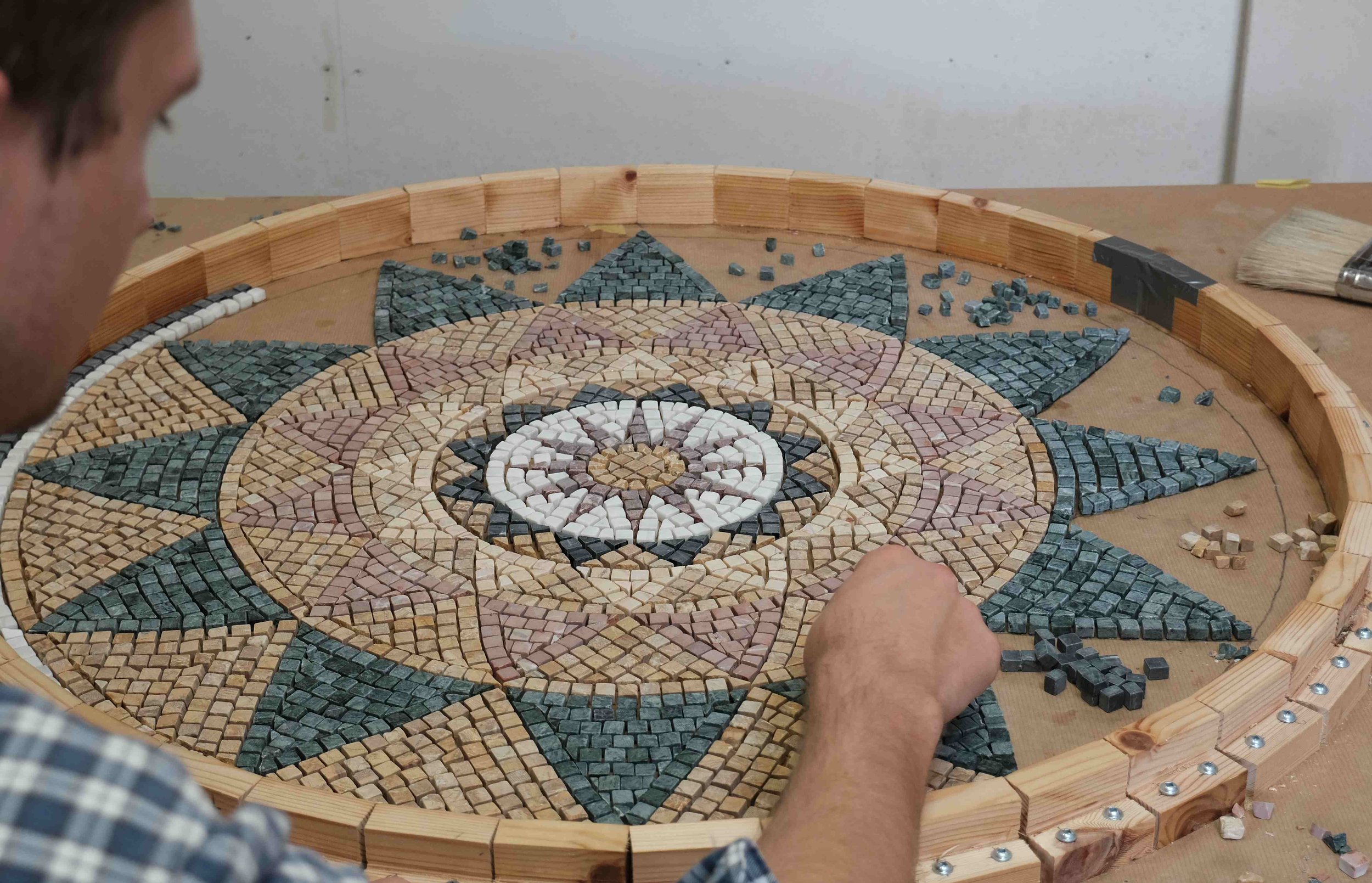The Creation of a Classical Garden Mosaic
I received the opportunity to design and build a Roman inspired garden mosaic for a period property in Exeter (UK). The owners were passionate about traditional mosaics from the days of Roman antiquity. After consideration we felt a mosaic inspired by the famous Dionysos tessellated villa floor mosaic in Corinth (2nd century BCE) would work really well for their Garden patio, providing a great focal point.
Translating larger mosaic designs into smaller scale pieces requires some simplification to fit the new space. A number of design options were provided to the client and after some refinement we settled on a bespoke, round geometric design.
I chose to use the reverse method (building it upside down), ideal for floors because a smooth top surface can be achieved. The decision was made to build the piece as a slab in my workshop prior to installation in the client’s home. The design was transferred to brown paper using carbon paper and then a wooden edge was used to act as the form sides.
A water-soluble glue was used to act as a temporary binder for the tesserae to the paper. Each individual tesserae had to be laid carefully by hand.
A selection of tumbled marble was used as the tesserae. Being tumbled means that the edges have been rounded over, making them smooth in appearance. Usually I use thinner tesserae pieces, but since this was for a floor that would see regular foot traffic, thicker tessera were preferable.
A traditional hammer and hardie were used to crack the the marble tessera: In many ways a superior tool than clippers, since there is less repetitive strain on the wrist. Once the glue had set the whole mosaic was grouted and left to dry. It was then back-filled with a concrete mix, then flipped over once cured.
I used warm water to remove the brown paper, revealing the finished mosaic design. Grout was re-applied to the top, to fill any gaps left. It then received a final polishing.
Working in close collaboration with the landscape designer (from greenmangardensdevon.co.uk), who was responsible for making the patio, a space was left for the mosaic to fit into. In order to have an aesthetic transition between the large slabs of the patio and the small tesserae of the mosaic, we used smaller trapezoidal stones to contour the edge of the mosaic.
Along with this and keeping within the design theme we created a mosaic for the top of the stone bench. Three colours were chosen and layered randomly along a linear andamento (visual flow). As it was a unique shape I used the direct method, for construction in situ.
To conclude, the client was blessed with a great space that proved perfect for a mosaic. The area will make an ideal outdoor space for entertaining guests. The vision was realised and their garden will have a timeless classic for years to come.












